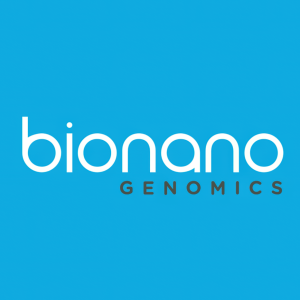Publication Outlines Potential for Optical Genome Mapping with Bionano’s Saphyr System to be the Foundation of a New Workflow in Prenatal Genetic Testing
Rhea-AI Summary
Bionano Genomics (BNGO) recently published a study in the journal Genes detailing the effectiveness of optical genome mapping (OGM) in prenatal genetic testing. The study highlights OGM's capacity to detect all types of structural variants (SVs), positioning it as a potential new standard in prenatal analysis. Notable findings include the identification of genetic disorders like trisomy 21 and DiGeorge syndrome. The research emphasizes OGM's cost-effectiveness and quick turnaround time, suggesting it could enhance prenatal testing workflows significantly.
Positive
- Study published in a peer-reviewed journal showcasing OGM's capabilities in prenatal genetic testing.
- OGM demonstrated ability to detect various genetic disorders, including trisomy 21 and DiGeorge syndrome.
- Potential for OGM to become a new standard of care in prenatal genetic analysis.
Negative
- None.
News Market Reaction 1 Alert
On the day this news was published, BNGO declined 3.92%, reflecting a moderate negative market reaction.
Data tracked by StockTitan Argus on the day of publication.
SAN DIEGO, April 06, 2021 (GLOBE NEWSWIRE) -- Bionano Genomics, Inc. (Nasdaq: BNGO) announced today a publication in the peer-reviewed journal Genes describing an analysis by optical genome mapping (OGM) of representative examples of common genetic syndromes that are the basis of prenatal genetic testing recommended by medical associations in the US and around the world. The paper’s authors have outlined a potential framework for OGM to be developed as the basis of a new standard of care in prenatal genetic analysis because of its ability to identify all types of structural variants (SVs).
“What we are seeing now, on a consistent basis, is the demonstration of utility for OGM in a variety of applications. Development and validation of OGM assays for pre-natal analysis is an area where the field could transform itself and help physicians and their patients,” commented Erik Holmlin, PhD, CEO of Bionano Genomics. “Over the last year alone, we have seen a great number of publications and presentations that demonstrate Saphyr’s prowess in cytogenetic analysis of genetic diseases, leukemias and solid tumors. While there remains significant work for these proof-of-concept studies to translate into broader, mainstream adoption, we believe the momentum is strong.”
The publication is presented as a commentary in the special issue of Genes titled "Advances in Prenatal Genetic Screening and Diagnosis Technologies", which addresses the increasingly complex decisions physicians and couples face about the quality and quantity of genetic information they wish to access as the technology for genetic testing advances. As non-invasive prenatal screening tests (NIPT) become the standard screening tool for pregnancies around the world, OGM could provide a high-throughput, comprehensive and high-resolution follow up genome analysis in case of a positive NIPT screen or for high-risk pregnancies following an abnormal ultrasound. The study authors led by Bionano chief medical officer Dr. Alka Chaubey and Augusta University professor Dr. Ravindra Kolhe state that development and validation of assays based on OGM would enable clinicians to accurately detect all types of genetic disorders with a single technology, resulting in a workflow that is both cost-effective and has a fast turn-around time.
Global medical associations including ACOG, ISUOG, ACMG recommend prenatal testing for the detection and prevention of genetic disorders using cytogenetic methods such as karyotype analysis, fluorescent in situ hybridization (FISH), and chromosomal microarray (CMA). Additionally, multiple molecular methods are used to identify repeat expansion and contraction disorders in routine clinical laboratories.
In this study OGM with Saphyr was used to detect a variety of genetic abnormalities in amniotic fluid and chorionic villus samples collected during pregnancy. The paper shows examples of how different OGM assays identified cases of trisomy 21 or Down syndrome, sex chromosome aneuploidy where additional copies of the X chromosome were present, DiGeorge syndrome, the most common microdeletion syndrome affecting about 1 in 4,000 births, a repeat expansion causing fragile X syndrome, and an unbalanced translocation in the fetus caused by a balanced translocation in the parent. The site-to-site reproducibility of the OGM prenatal workflow was also evaluated by analyzing 5 samples in replicates at two different sites, on different instruments, and with different operators, showing concordance across both sites.
The publication is available at https://www.mdpi.com/2073-4425/12/3/398/htm
About Bionano Genomics
Bionano is a genome analysis company providing tools and services based on its Saphyr system to scientists and clinicians conducting genetic research and patient testing, and providing diagnostic testing for those with autism spectrum disorder (ASD) and other neurodevelopmental disabilities through its Lineagen business. Bionano’s Saphyr system is a research use only platform for ultra-sensitive and ultra-specific structural variation detection that enables researchers and clinicians to accelerate the search for new diagnostics and therapeutic targets and to streamline the study of changes in chromosomes, which is known as cytogenetics. The Saphyr system is comprised of an instrument, chip consumables, reagents and a suite of data analysis tools. Bionano provides genome analysis services to provide access to data generated by the Saphyr system for researchers who prefer not to adopt the Saphyr system in their labs. Lineagen has been providing genetic testing services to families and their healthcare providers for over nine years and has performed over 65,000 tests for those with neurodevelopmental concerns. For more information, visit www.bionanogenomics.com or www.lineagen.com.
Forward-Looking Statements
This press release contains forward-looking statements within the meaning of the Private Securities Litigation Reform Act of 1995. Words such as “may,” “will,” “expect,” “plan,” “anticipate,” “estimate,” “intend” and similar expressions (as well as other words or expressions referencing future events, conditions or circumstances) convey uncertainty of future events or outcomes and are intended to identify these forward-looking statements. Forward-looking statements include statements regarding our intentions, beliefs, projections, outlook, analyses or current expectations concerning, among other things: the potential for OGM with Saphyr to serve as a foundation for a new standard of care in prenatal genetic analysis; our expectations or beliefs regarding past and potential future publications and presentations that demonstrate Saphyr’s capabilities; the potential for OGM with Saphyr to improve outcomes for physicians and patients, including in the field of prenatal analysis; our beliefs regarding the potential benefits of Bionano’s Saphyr technology; Saphyr’s capabilities in comparison to and in conjunction with other genome analysis technologies, including in prenatal genetic testing; the potential for Saphyr to reduce or eliminate sequential and confirmatory assays and expedite patient treatment; expectations that Saphyr can allow clinicians to accurately detect all types of genetic disorders with a single technology; and the execution of Bionano’s strategy. Each of these forward-looking statements involves risks and uncertainties. Actual results or developments may differ materially from those projected or implied in these forward-looking statements. Factors that may cause such a difference include the risks and uncertainties associated with: the impact of the COVID-19 pandemic on our business and the global economy; general market conditions; changes in the competitive landscape and the introduction of competitive products; changes in our strategic and commercial plans; our ability to obtain sufficient financing to fund our strategic plans and commercialization efforts; the ability of medical and research institutions to obtain funding to support adoption or continued use of our technologies; the loss of key members of management and our commercial team; and the risks and uncertainties associated with our business and financial condition in general, including the risks and uncertainties described in our filings with the Securities and Exchange Commission, including, without limitation, our Annual Report on Form 10-K for the year ended December 31, 2019 and in other filings subsequently made by us with the Securities and Exchange Commission. All forward-looking statements contained in this press release speak only as of the date on which they were made and are based on management's assumptions and estimates as of such date. We do not undertake any obligation to publicly update any forward-looking statements, whether as a result of the receipt of new information, the occurrence of future events or otherwise.
CONTACTS
Company Contact:
Erik Holmlin, CEO
Bionano Genomics, Inc.
+1 (858) 888-7610
eholmlin@bionanogenomics.com
Investor Relations and
Media Contact:
Amy Conrad
Juniper Point
+1 (858) 366-3243
amy@juniper-point.com








